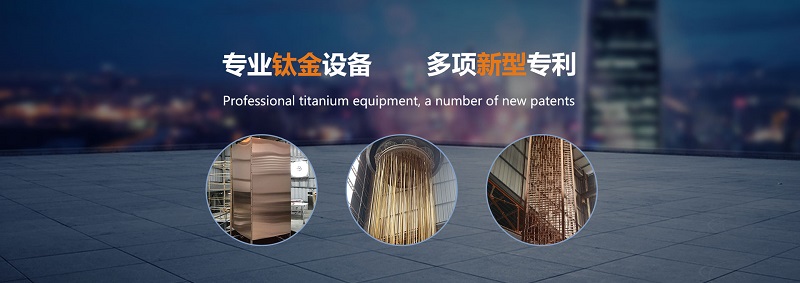The difference between electroless plating
The difference between electroless plating and electroplating is that electroplating requires an external current and an anode, while electroless plating relies on the autocatalytic reaction that occurs on the metal surface.
The electroless nickel plating layer is extremely uniform. As long as the plating solution can be soaked and the solute exchange is sufficient, the plating layer will be very uniform and almost achieve the effect of contouring.
Electroplating can not be applied to the entire surface of some complex shapes, but electroless plating is used to plate any shape of the workpiece.
The high-phosphorus electroless nickel plating layer is amorphous, the surface of the plating layer does not have any crystal gaps, and the electroplating layer is a typical crystalline plating layer.
Electroplating has an applied current, so the plating speed is faster than electroless plating. Electroplating of the same thickness is completed earlier than electroless plating.
The bonding force of the electroless plating layer is generally higher than that of the electroplated layer. Since electroless plating mostly uses food-grade additives and does not use harmful substances such as cyanide, electroless plating is more environmentally friendly than electroplating.
Electroless plating currently has only one color of pure nickel-phosphorus alloy on the market, and electroplating can achieve many colors.
Electroless nickel plating technology is a method of obtaining a coating layer by using a metal salt and a reducing agent to carry out an autocatalytic reaction on the surface of the material. So far, electroless nickel plating is one of the fastest-growing surface treatment processes in foreign countries, and it has the widest application range. The rapid development of electroless nickel plating is determined by its superior process characteristics.
I. Process characteristics of electroless nickel plating
1. Uniform thickness Uniform
thickness and good uniform plating ability are a major feature of electroless nickel plating and one of the reasons for its wide application. The thickness is not uniform. The thickness of the plating layer varies greatly throughout the part, especially parts with complex shapes. At the corners of the part and near the anode, the plating is thicker, but the inner surface or the anode The plating layer in the far place is very thin, or even can not be plated. The electroless plating can avoid this deficiency of electroplating. In electroless plating, as long as the surface of the part is in contact with the plating solution, the components consumed in the plating solution can be replenished in time, and the thickness of the plating at any part is basically the same, even for grooves, gaps and blind holes.

Titanium equipment manufacturers, PVD equipment manufacturers , PVD equipment prices, large tube plating machine manufacturers, large plate plating machine manufacturers
2. There is no problem of hydrogen embrittlement.
Electroplating is the use of power to convert nickel cations to metallic nickel and deposit them on the anode. The chemical reduction method is to reduce nickel cations to metallic nickel and deposit it on the surface of the base metal. The tests show that the coating The intercalation of middle hydrogen has nothing to do with the chemical reduction reaction, but has a great relationship with the plating conditions. Generally, the hydrogen content in the plating layer increases with the increase of the current density.
In the nickel plating bath, except for a small part of the hydrogen produced by the reaction of NiSO4 and H2PO3, most of the hydrogen is produced by the hydrolysis caused by the electrode reaction when the two electrodes are energized. In the anode reaction, with the generation of a large amount of hydrogen, the cathode The hydrogen on the metal is precipitated simultaneously with the metal Ni-P alloy to form (Ni-P) H, which is deposited in the deposited layer. As an excess amount of atomic hydrogen is formed on the surface of the cathode, a part of it is desorbed to form H2. In the plating layer, a part of the hydrogen remaining in the plating layer diffuses into the base metal, and another part of the hydrogen accumulates at the defects of the base metal and the plating layer to form a hydrogen gas group. The gas group has a high pressure. Under the effect of pressure, the defect causes Cracks, under stress, form a source of fracture, which leads to hydrogen embrittlement fracture. Hydrogen penetrates not only into the base metal, but also into the plating layer. It is reported that the hydrogen in the plating layer can be basically removed after heat treatment at 400 ° C × 18h or 230 ° C × 48h. Difficult, and electroless nickel plating does not require hydrogen removal.
3. The functions of many materials and components such as corrosion resistance and high temperature oxidation resistance are reflected by the surface layer of materials and components. In general, some chemical nickel plating layers with special functions can be used instead of others. The solid solid material prepared by the method can also use the cheap base material electroless nickel plating to replace the parts made of valuable raw materials. Therefore, the economic benefit of electroless nickel plating is very great.
4. Can be deposited on the surface of various materials, such as steel nickel-based alloy, zinc-based alloy, glass, ceramic, plastic, semiconductor and other materials, thus creating conditions for improving the performance of these materials.
5. No direct current motor or control equipment required for general electroplating, low heat treatment temperature, different corrosion resistance and wear resistance can be obtained after different holding time below 400 ℃, so it does not have heat treatment deformation The problem is particularly suitable for processing some parts with complex shapes and surfaces that require wear and corrosion resistance.
6. The thickness of the chemically deposited layer is controllable, its process is simple, its operation is convenient, its temperature is low, and its cost is lower than that of other surface treatments.

